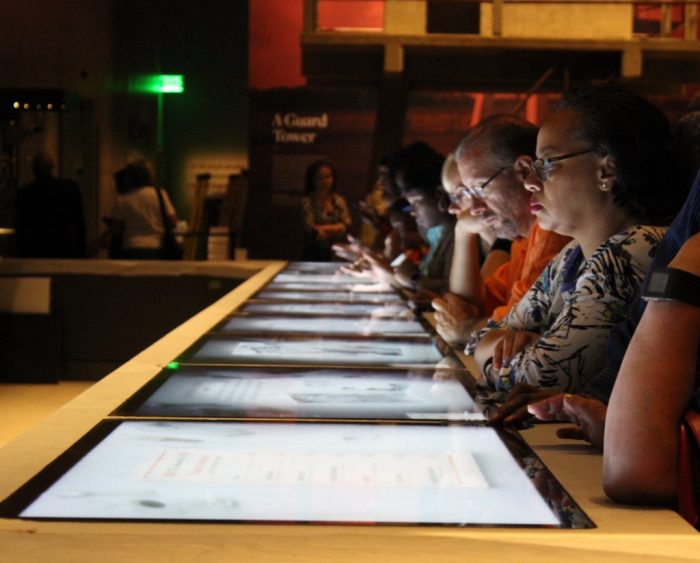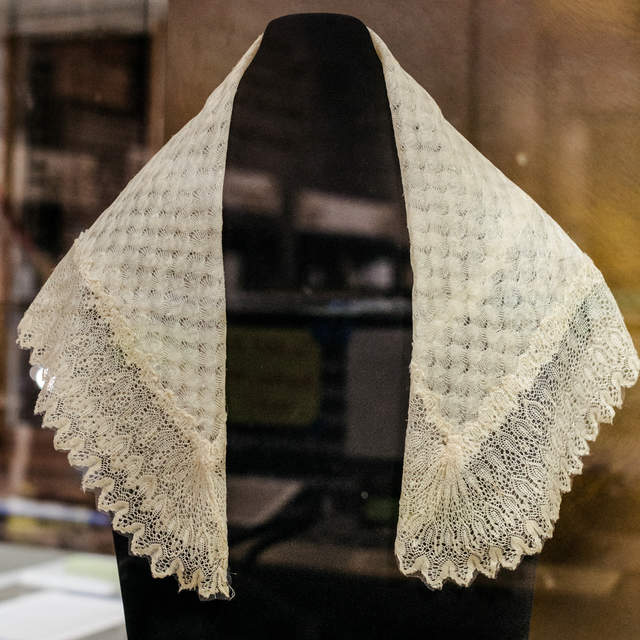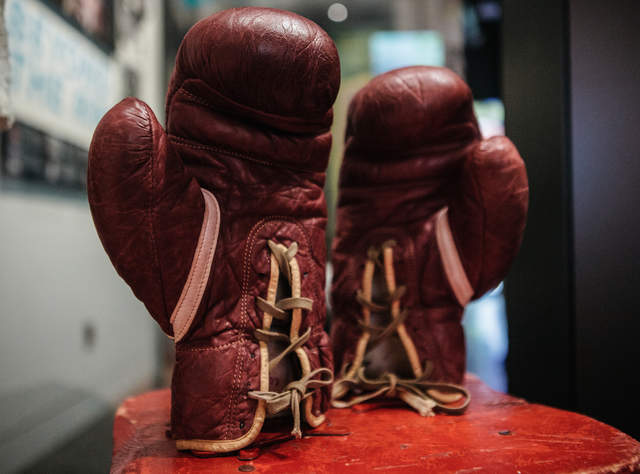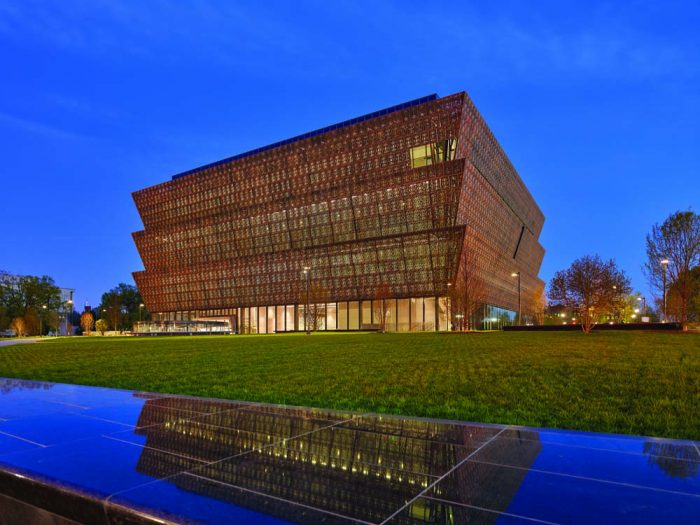The Smithsonian’s National Museum of African American History and Culture will officially open to the public on Saturday, Sept. 24, 2016. More of a narrative than a museum, the exhibits tell the story of African Americans from slavery to the nation’s first black president. (Courtesy photo)
WASHINGTON – The National African American Museum of History and Culture, scheduled to open this weekend to much fanfare and huge crowds, seems to have something for everyone –black and white, young and old, rich and poor.
For Remi Maarouf, who visited last Saturday as part of a special preview, the shards of glass from the 1963 16th Street Baptist Church bombing that claimed four black girls, struck particularly hard.
The exhibit that included Resurrection City, a tent community erected on the National Mall in 1968 as part of the Poor People’s March that the Rev. Martin Luther King Jr. planned but never lived to see, brought back special memories for Augusta Wills.

Niyah Boney, a Washington 9th grader, said it was more recent history, the Black Lives Matter pieces, that resonated with him.
Maarouf, Wills and Boney were among scores of a special group of Washington-area donors to the museum who visited the facility last weekend. Hundreds more who have visited the museum in recent weeks — from President Barack Obama to Olympian Simone Manuel to 85-year-old Mary Smith of Charleston, S.C. – have said they were moved by what they saw.
More of a narrative than a museum, the facility’s curators say, the exhibits are placed in a way that tells the story of African Americans from the beginning.
The story begins 70 feet below the ground at the bottom level across three exhibits — “Slavery and Freedom,” “Defending Freedom, Defining Freedom: Era of Segregation 1876-1968” and “A Changing America: 1968 and Beyond” – and works its way up to the top of the five-story building.
Museum visitors can see pieces of a Portuguese slave ship, a slave cabin, a Boeing aircraft used to train Tuskegee Airmen, a lunch counter stool from the Greensboro sit-ins, the couch and a dress worn by “Oprah on the Oprah Winfrey Show.”
There is Michael Jackson’s hat and jacket from his “Victory” tour, Harriett Tubman’s Shawl, Muhammed Ali’s boxing gear, Emmitt Till’s coffin, Chuck Berry’s red Cadillac Eldorado, Carl Lewis’ Olympic medals and hundreds more pieces of black history.

Gloria Snipes, who visited from Portsmouth, Va., last weekend, found the slavery exhibits the most thought-provoking.
“I thought about all the blacks who were from Africa that were torn away from their families and having to endure a trip on the ocean in the hull of a ship,” Snipes said. “It was moving to see the chains that were used to enslave people.”
Snipes and her husband were among the thousands of African Americans, other individuals and corporations who made financial contributions or donated rare items so the museum could exist.
Oprah Winfrey, for example, donated $12 million. NBA legend Michael Jordan and BET founder Robert Johnson are among those who each gave more than $5 million. Anthony Welters and his wife, U.S. Ambassador Beatrice Welters, gifted $2 million. Another 100 individuals and institutions, like Alfred Street Baptist Church of Alexandria, Va., donated $1 million or more.
Then there are the thousands of others, charter members, who gave smaller donations and reached into their closets and donated some of the tens of thousands of exhibits.
After finishing the tour Saturday, Kecia Wills of Washington said she likes how the museum is structured.
“Starting from the bottom, it gives you a feeling of being in the bottom of a slave ship,” Wills said. “It’s dark, a little tight and as you go up the floors are wider. There is more space and more air. It just shows the whole cultural experience of black people once we weren’t slaves anymore.”
The third level of the museum is home to what’s called the Community Galleries, which chronicle African Americans in sports, the military, the great migration from the South and the ways black people created opportunities for themselves, from collegiate Greek life to Hip-Hop music.
The Culture Galleries on the fourth floor — “Musical Crossroads,” “Cultural Expressions,” “Visual Arts Gallery,” and “Taking the Stage” — feature a modern art gallery, Chuck Berry’s 1973 Cadillac and an interactive beat production video.
Augusta Wills of Washington said the exhibit she identified with most was “A Changing America,” because it included Resurrection City. She was there.

“I’d get a chance to come down and talk to people who were occupying the tent city,” Wills recalled. “So, that exhibit was my favorite in terms of something I really identified with.”
Remi Maarouf, who is white, said seeing historical pieces live gave the artifacts a greater meaning to him.
“You see things in textbooks and you read about things, like the church bombing,” he said. “To see the shards of glass from the church window, things like that, was just kind of incredible.”
His friend, Scott Ackiss, agreed.
“You read about all these individual events, but to see it all from one perspective,” said Ackiss, who is also white. “I didn’t get the feeling of an African American. You kind of tune that out and see the larger story being told.”
Niyah Boney, 14, took particular interest in the sign used to protest the death of Trayvon Martin, an unarmed black 17-year-old, by a self-appointed security officer in Sanford, Fla., part of an exhibit about Black Lives Matter.
“I felt like I actually witnessed something that was in there, a part of history,” she said.
The museum’s senior curator of history, William Pretzer, said the facility is more than a place where people can view or relive the past.
“We want this to be a place where we can talk about what, in America is a topic that we don’t talk honestly enough about, and that’s race,” Pretzer said.
“Without being angry, without being sensitive, with everyone trying to understand everyone else’s point of view, we can move to a kind of interaction around issues that involve race.”
Ron Lewis visited from Northern Virginia. Lewis said despite all of the horror and heartbreak that were part of the museum’s exhibits, he left with a good feeling.
“The last 50 years we’ve made tremendous progress,” he said. “You have a lot more people able to live the American dream and they all look like us. It makes you feel good.”
“It makes you hopeful.”




